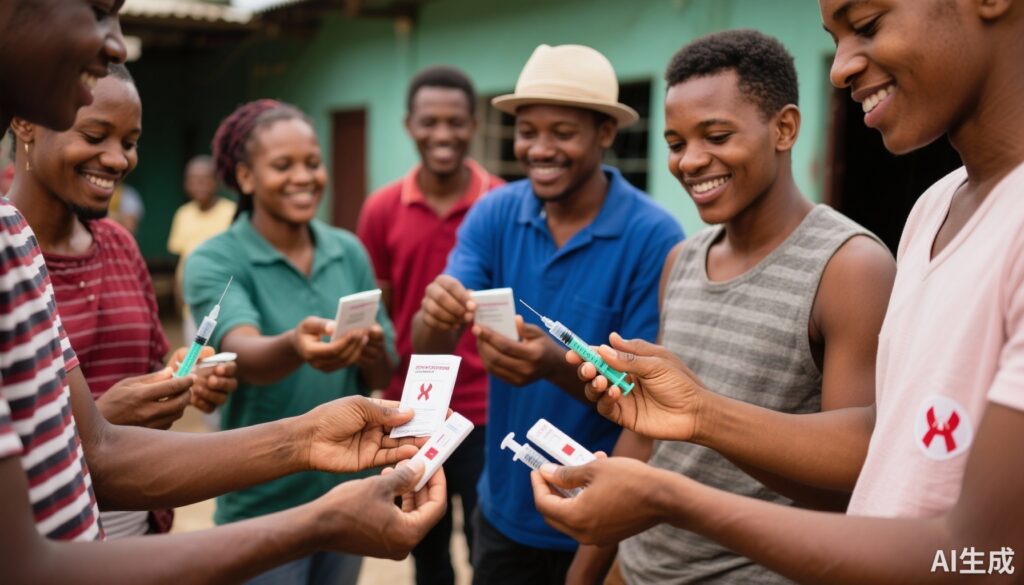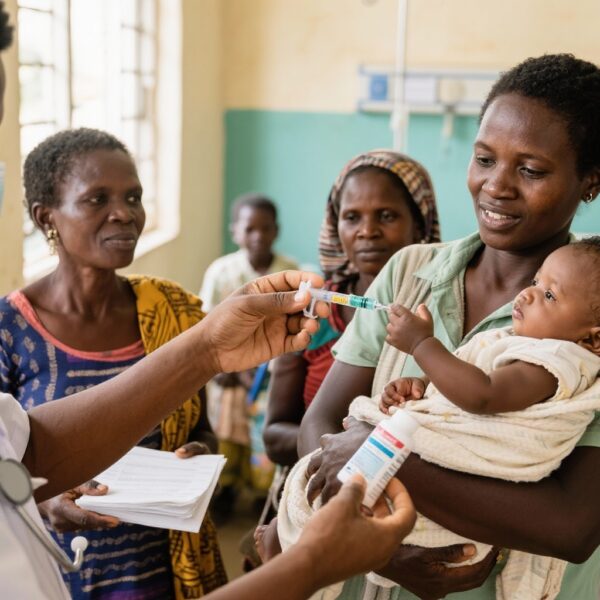Highlight
- Donation-based interventions, such as secondary distribution of HIV self-tests and secondary syringe exchange, foster prosocial behaviors improving HIV/STI service reach.
- Givers are motivated by altruism and developing a prosocial identity, especially within close social networks, facilitating tailored and reciprocal health service distribution.
- Legal risks and potential for unsupervised clinical care pose barriers, particularly in secondary syringe exchange among people who inject drugs.
- Incorporating prosocial donation models could enhance HIV/STI program implementation globally, especially among marginalized populations.
Study Background
Donation-based prosocial interventions represent an innovative approach in HIV and sexually transmitted infection (STI) prevention and care. They involve individuals who receive free health services—such as HIV self-testing kits or sterile syringes—and then donate or distribute resources to others in their social networks. This strategy aligns with calls from research and policy to embed prosocial behavior into HIV/STI programs, potentially expanding access, particularly among vulnerable or hard-to-reach populations. Given the ongoing global burden of HIV and STIs, especially among marginalized groups such as people who inject drugs, key populations, and those facing stigma, understanding factors that influence donation-based interventions is critical for optimizing public health impact.
Study Design
This article reports on a systematic review of qualitative studies focusing on donation-based interventions within HIV/STI research. The review searched five major databases—PubMed, CINAHL, Embase, PsycInfo, and Scopus—up to January 23, 2024, and screened 374 studies to include 27 that met criteria. These studies collectively involved 1543 participants and evaluated three main intervention types: secondary distribution of HIV self-tests (15 studies), secondary syringe exchange programs (10 studies), and “pay it forward” initiatives for STI testing (2 studies). The included studies spanned diverse income settings: low-income (5 studies), middle-income (13), and high-income (12) countries. Data were synthesized using thematic synthesis, and study quality and confidence in findings were assessed using the Critical Appraisal Skills Programme Qualitative Studies Checklist and GRADE-CERQual methodology.
Key Findings
Motivations for Donation-Based Interventions
Participants who engaged in donation-based distribution exhibited motivations primarily rooted in altruism and prosocial identity cultivation. In 20 studies, moderate confidence evidence showed that givers were driven by a selfless desire to benefit others. This includes empathy for peers at risk and a commitment to community well-being. Simultaneously, the act of donating reinforced their own identity as responsible, caring members within their social networks, fostering personal empowerment and purpose.
Facilitators Enhancing Intervention Success
Social proximity was a consistent facilitator across 22 studies. The close relationships between givers and recipients enabled tailored communication strategies that respected social and cultural contexts, increased trust, and strengthened peer support systems. This proximity promoted reciprocal giving, reinforcing a cycle of ongoing distribution and engagement with HIV/STI services. The ability to customize intervention delivery based on intimate knowledge of recipients’ needs and preferences enhanced uptake and acceptability.
Barriers and Challenges
Despite promising motivators and facilitators, significant challenges exist. Particularly in secondary syringe exchange programs involving people who inject drugs, seven studies with low confidence highlighted concerns regarding legal risks. Participants faced potential criminal liabilities for distributing syringes, which in some contexts resulted in decreased willingness to participate or increased stress and stigma. Moreover, the peer distribution model risked encouraging unsupervised clinical care behaviors, which might introduce harm if users lack proper guidance or training. These concerns illustrate the delicate balance required to implement these interventions within complex legal and social environments.
Diverse Settings and Implications
The studies encompassed varied geographic and income settings, demonstrating that donation-based interventions are feasible globally but require context-specific adaptations. Low- and middle-income countries may face resource limitations and different social dynamics influencing donor-recipient relationships, while high-income settings contend with regulatory frameworks and stigma. Tailored implementation strategies accounting for these environmental and systemic factors are essential to maximize benefit.
Expert Commentary
Donation-based prosocial interventions represent a conceptual shift in public health delivery—leveraging peer networks and intrinsic altruism to expand access to vital HIV/STI services. The systematic review underscores the powerful role of social connections in motivating health-related generosity, potentially reducing barriers to testing and harm reduction.
However, the concerns regarding legal risk and quality of care in peer-led distribution are noteworthy. Policymakers and program developers must work towards enabling environments, including legal protections and supportive training, to mitigate these barriers. Integration of donation models should also be accompanied by robust monitoring to identify adverse outcomes and sustain quality.
Future research might explore longitudinal outcomes of donation-based interventions, the psychosocial impacts on givers and recipients, and strategies to scale these models sustainably. Additionally, attention to intersectional stigma and social determinants of health remains critical in these vulnerable populations.
Conclusion
This systematic review presents a comprehensive analysis of the motivations, facilitators, and barriers associated with donation-based interventions in HIV and STI research. The findings suggest donation-based approaches foster prosocial motivation and responsibility among socially marginalized individuals, thus enhancing access to prevention and testing services. Social proximity and altruism are key enablers, while legal risks and challenges related to unsupervised care present barriers that must be addressed.
As a promising strategy, donation-based interventions could augment traditional HIV/STI programs when culturally tailored and supported by enabling policies. Recognizing and harnessing prosocial behaviors within communities offers a valuable avenue for public health advancement, especially in contexts where stigma and resource constraints limit service reach. Continuing research and nuanced program design will be central to realizing the full potential of these innovative interventions.
Funding and ClinicalTrials.gov
The original systematic review by Ho et al. did not specify external funding sources within the abstract. No clinical trial identifiers were reported, consistent with the review study design.
References
Ho D, Liu Y, Conklin J, et al. Motivations, Facilitators, and Barriers of Donation-Based Interventions in HIV and Sexually Transmitted Infection Research: A Systematic Review. JAMA Netw Open. 2025;8(10):e2537382. doi:10.1001/jamanetworkopen.2025.37382
Additional References for Context:
1. Mak WWS, Mo PKH, Lee SSK, et al. Peer support in HIV self-testing: A review of implementation and impact. AIDS Behav. 2022;26(5):1513-1526.
2. Des Jarlais DC, Nugent A, Solberg A, Feelemyer J, Mermin J. Syringe Service Programs for Persons Who Inject Drugs in Urban, Suburban, and Rural Areas — United States, 2013–2018. MMWR Morb Mortal Wkly Rep. 2020;69(45):1617-1621.
3. McCoy SI, Kaponda CP, Taegtmeyer M, et al. “Pay it Forward”: Utilizing Social Networks for Enhanced STI Testing Uptake. Sex Transm Infect. 2023;99(1):34-41.


